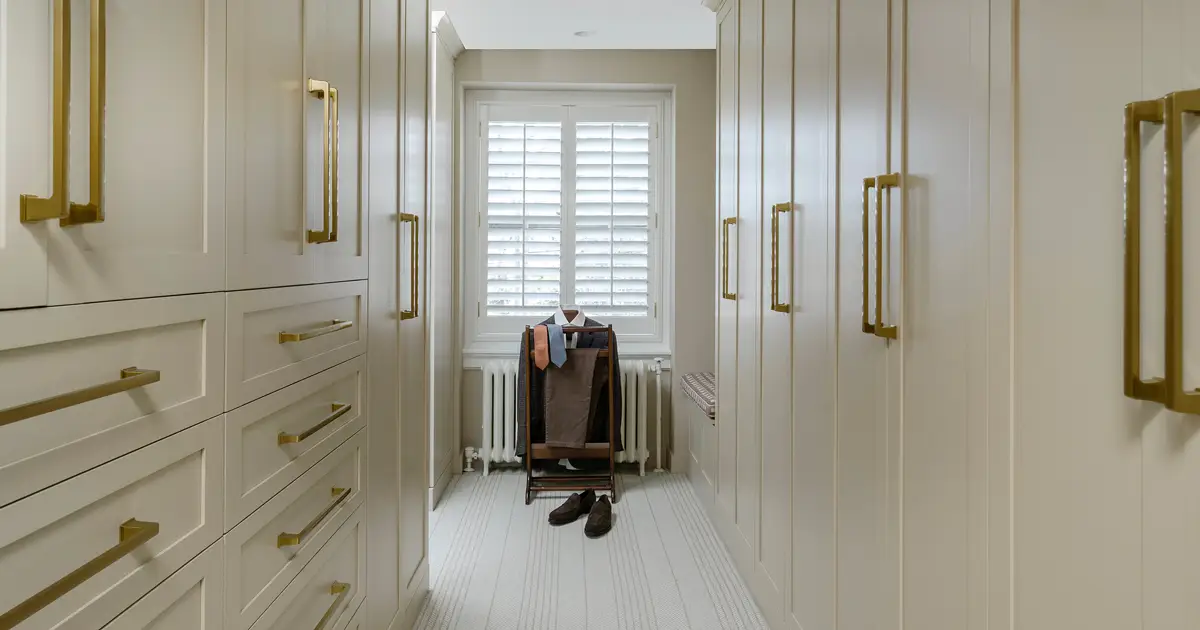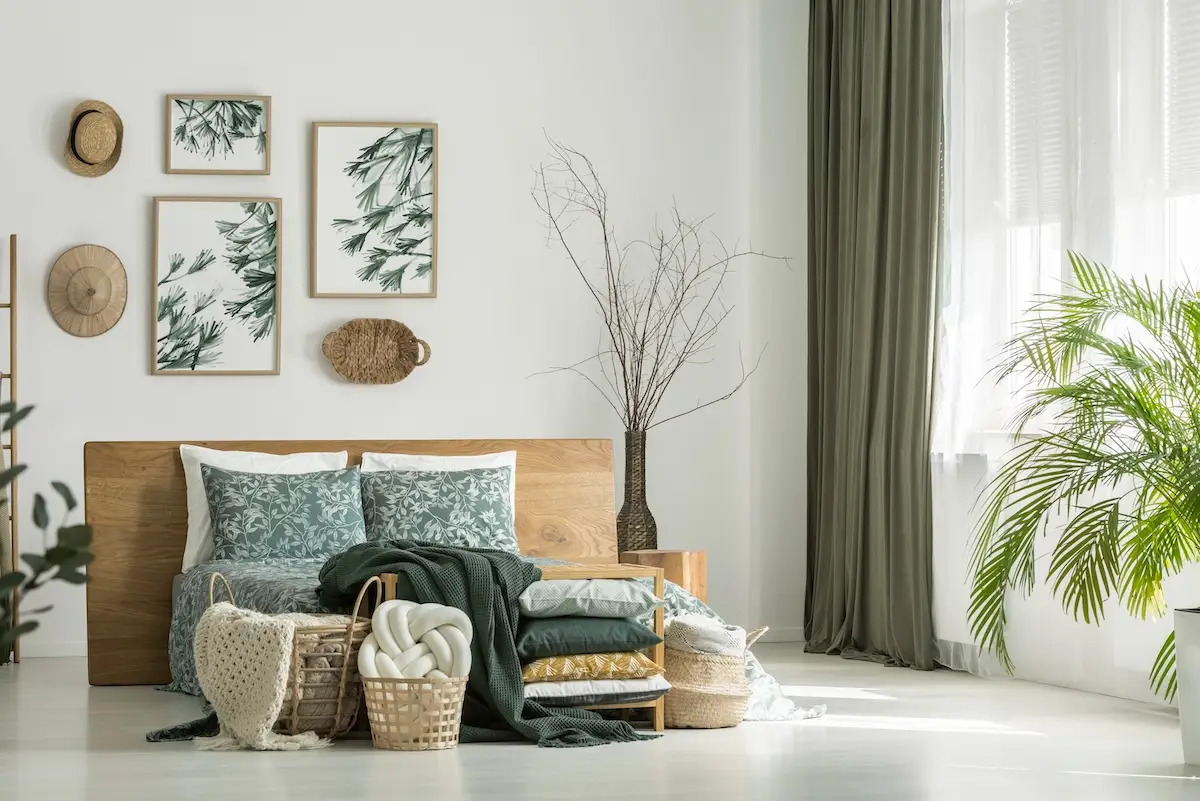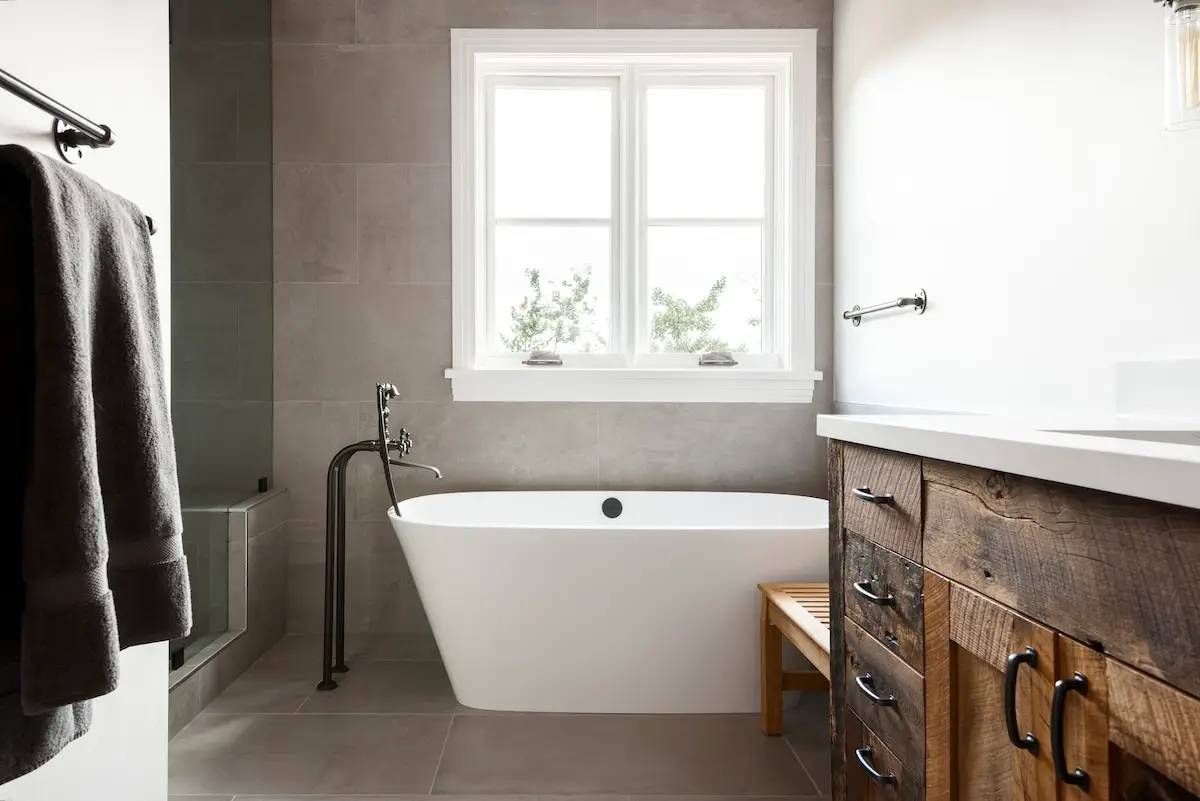As we become increasingly aware of the impact our daily lives have on the environment, our duty as design professionals is to ensure what we produce is not just beautiful and functional, but also efficient and eco-friendly. So here we go… Sustainable Styling 101.
We’re always searching for innovative ways to produce low-impact, green design choices. This includes selecting eco-friendly paint options and responsibly sourced natural materials to making mindful selections that enhance natural light and reduce energy costs.
This shift in the way we think about design is not only beneficial to our environment but can also be more cost-effective, easier to maintain, better for your personal health, and even more beautiful than traditional design methods.
Layering with Natural Materials
The three important factors in interior design are color, depth, and texture. Without all three working in harmony, the concept falls flat. It’s our job at WPL Interior Design to make sure we’re equally balancing each of these three traits. We want to ensure one doesn’t outshine the other. Conveniently, one of the greatest ways of achieving this balance is through using natural and eco-friendly materials. Many of the most sustainable products effortlessly provide all three of these critical elements at once.
Occasionally, some of these materials, often raw materials, can appear harsh or uninspiring on their own. For instance, concrete can come off as cold and industrial. But it is actually a wonderfully versatile and sustainable product. It’s important to make sure when bringing concrete into your home decor to layer it with other materials. Lush textiles, plants, and grainy woods are all good examples in order to effectively elevate concrete.
Other materials, like stones and reclaimed woods naturally bear all three of these elements, making them some of the most fun and adaptable sustainable materials to work with. The wonderful organic qualities of these products not only bring true character into your home, but they are a simple and stylish way of achieving sustainable design – just make sure to do your research about how these materials have been sourced, harvested, and mined.
Optimizing and Utilizing the Sun
Taking advantage of our greatest natural resource is one the best decisions a homeowner can make for sustainability, health, and design. The sun truly has the power to transform a space while keeping loads of money in your pocket. Undoubtedly, these benefits are equally as valuable when planning your dream home. As you begin your renovation (or building) journey, especially early on in the schematic-design phase, it is critical that you take into account the location of the home and its relation to the sun. Plan your window placements with intenent, and don’t forget to place your mirrors where they will help redirect daylight into poorly lit spaces.
Financially, maximizing daylight will not only reduce your need for internal lighting, thus cutting your electric bill, but can increase the value of your home, and lower heating costs in the winter.
Holistically, the benefits are endless. The sun has the power to boost serotonin levels, help fight bacteria, support mental productivity, and so much more. Since most of us are spending the majority of our time indoors, the amount of sun we take in plays a monumental role in our mood and mental health, helping to lower stress and anxiety levels.
From a pure design standpoint, natural light can make any space seem larger than it actually is. The sun also can bring out a different, more exuberant look on color, depending on the finish, material, and furniture. This is a potential that no light bulb, no matter how advanced, can match.
Choosing the Right Products
Typically, when you think about going green at home, you quickly think about what makes your house run. We think about intimidating equipment like solar panels, high-efficiency appliances, and sophisticated water treatment technology. Seldom do we think about the items we see and use every day: non-toxic paints for the walls, eco-friendly upholstery for your furniture and window treatments, and even recycled countertop materials. The list goes on and on. It is crucial that we make conscious choices for each and every item we bring into our home.
Beyond incorporating innovative and green products, consider another form of sustainable design practice, our favorite: antiques! Using antique furniture and fixtures is a fabulous way to go green in your home. Not only are you avoiding purchasing brand-new furniture right off the line, but it can be a thrilling and rewarding adventure.




